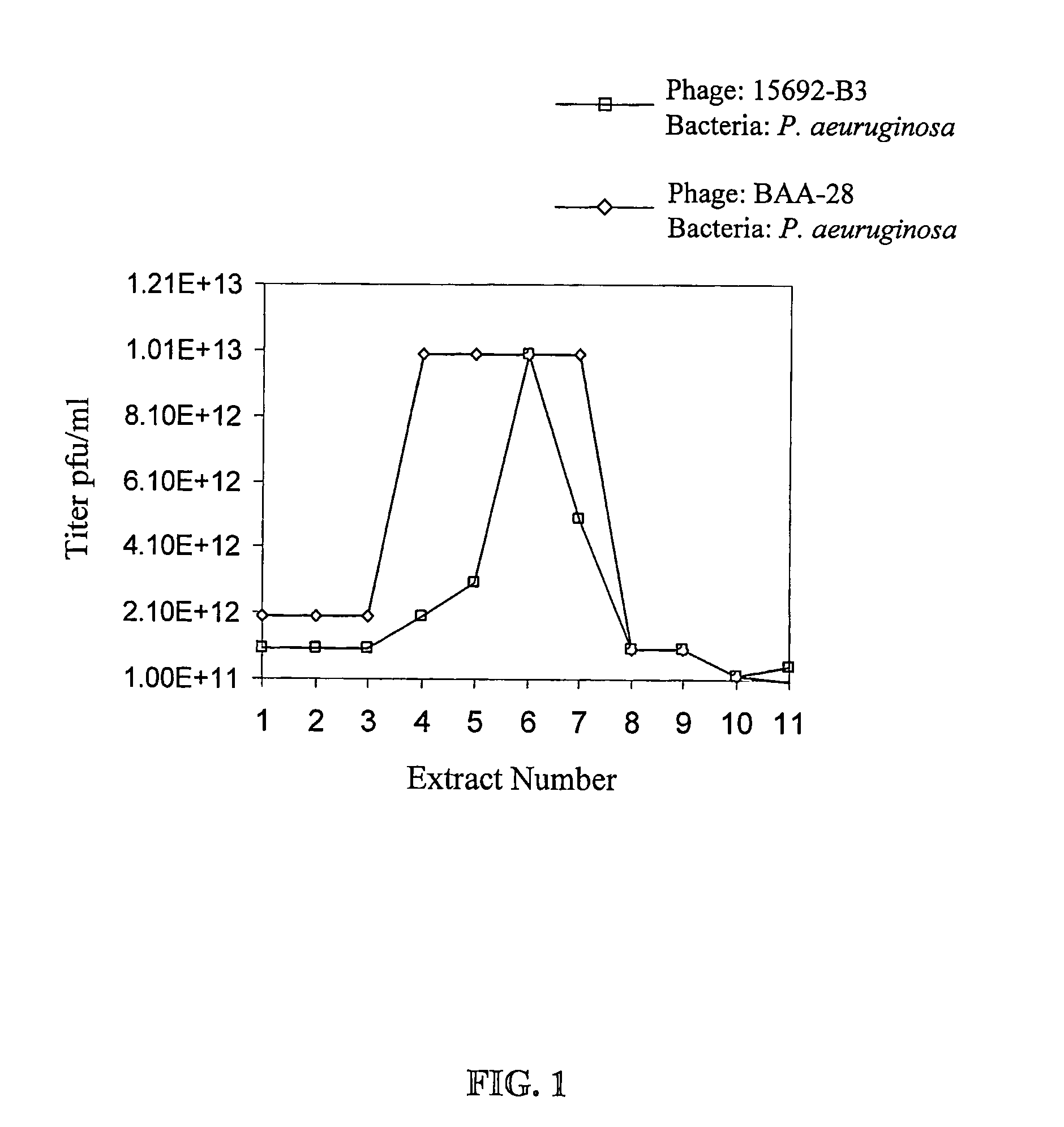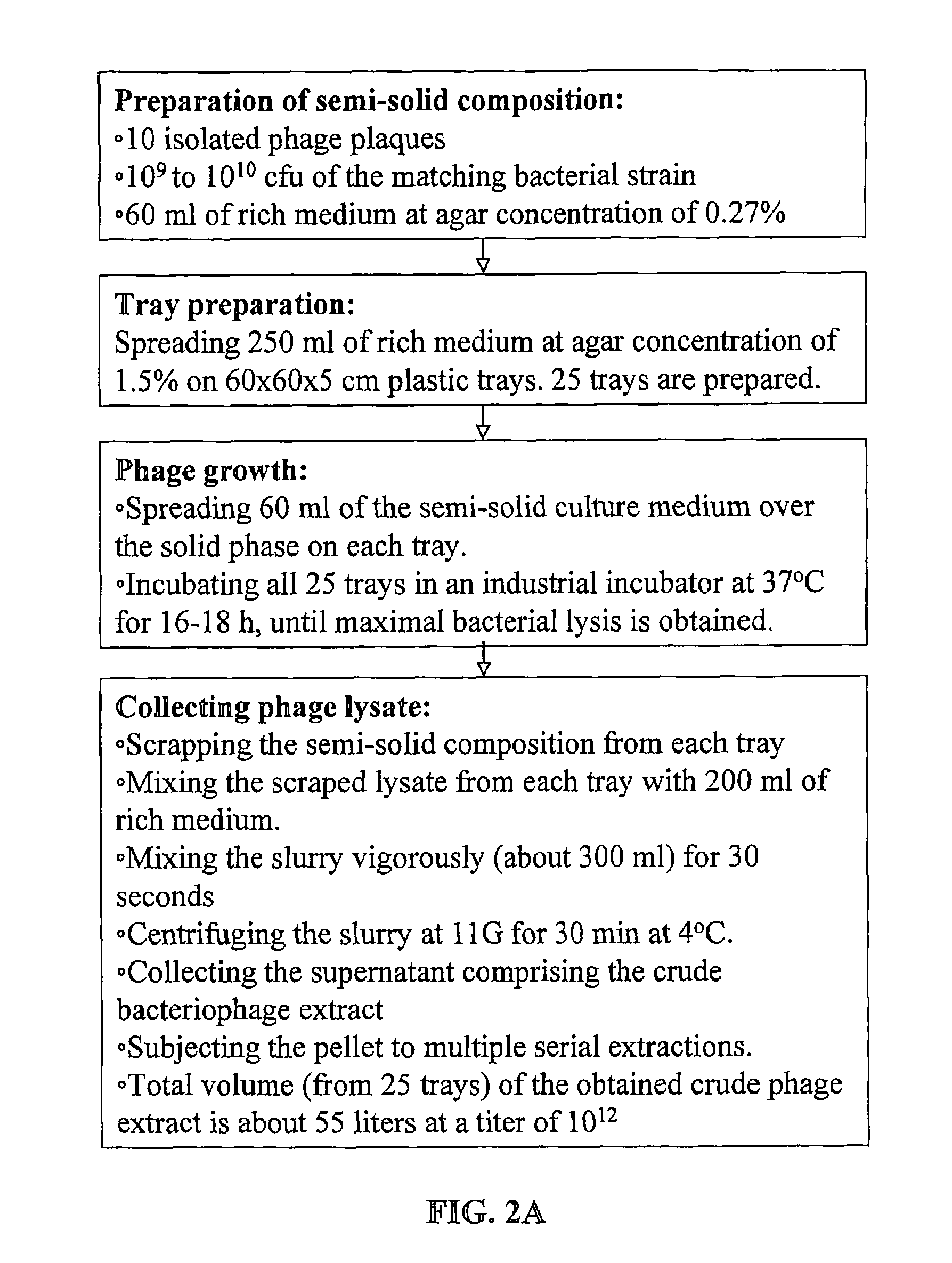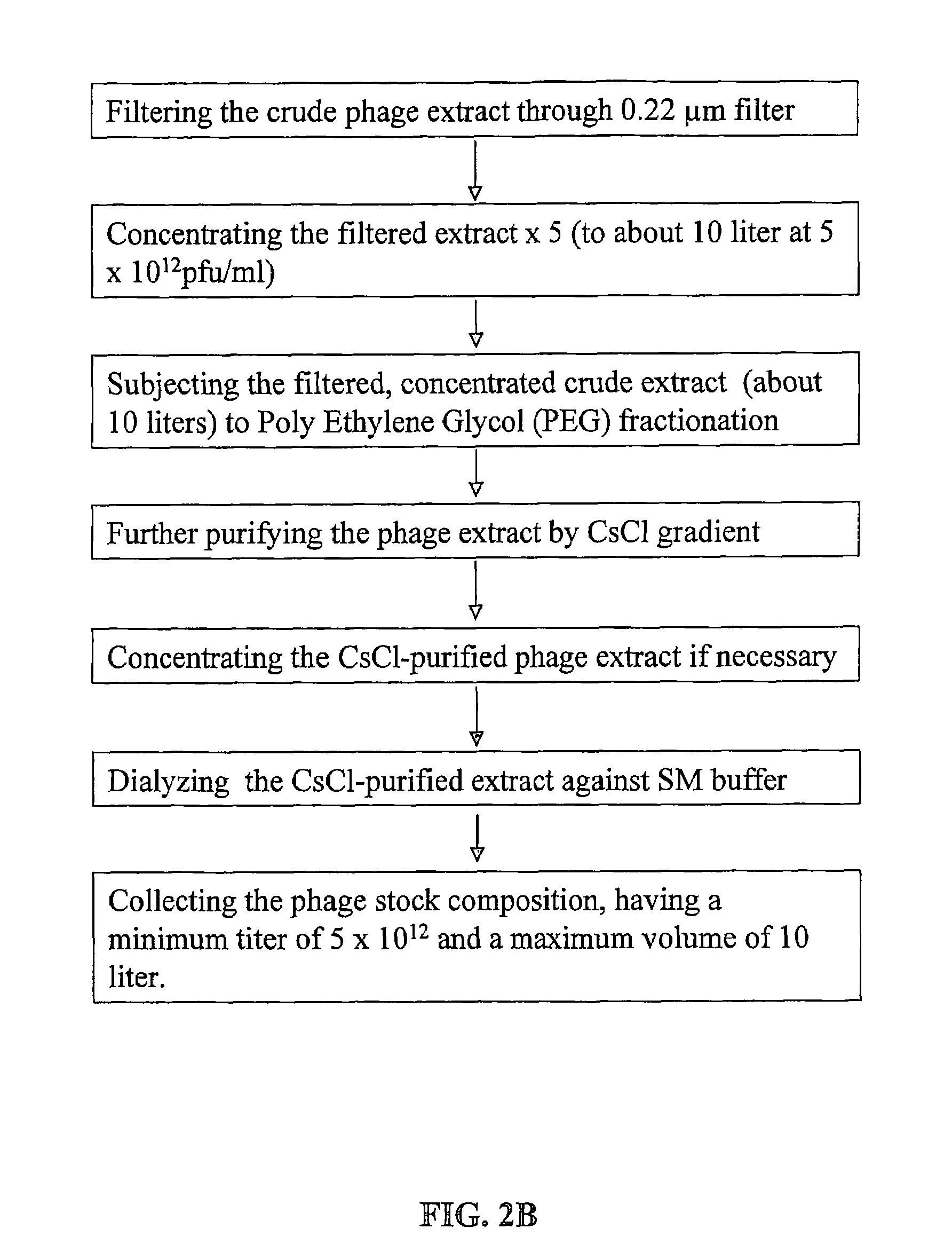Production of bacteriophage compositions for use in phage therapy
a technology of phage therapy and composition, which is applied in the field of phage therapy of bacteria, can solve the problems of increasing the number of bacterial strains, provoking much controversy, and raising widespread fears of a pre-antibiotic era
- Summary
- Abstract
- Description
- Claims
- Application Information
AI Technical Summary
Benefits of technology
Problems solved by technology
Method used
Image
Examples
example 1
Preparation of Phase Lysate Having a High Titer
Strains
[0134]Phage strains:[0135]ATCC 15692-B3[0136]ATCC BAA-28
[0137]Bacteria: Pseudomonas aeruginosa strain PAO-1 (Prof. H-W. Akkermann's collection, Laval University, Quebec, Canada).
Phage Growth
[0138]Phage of one of the strains designated above was propagated on P. aeruginosa as described herein below under “Obtaining bacteriophage stock composition”. Separate plaques were isolated and stored at 4° C. in 50 ml of Phage buffer (MgCl2 0.1M, CaCl2 0.1M, NaCl 0.05M, pH 7.5).
Obtaining Bacteriophage Stock Composition
[0139]Bacterial culture of P. aeruginosa was seeded in 20 ml Tryptic Soy Broth (TSB) (HyLabs, Rehovot) prepared from one bead (HyTransport storage system, HyLabs, Rehovot) and grown with agitation at 240 rpm at 37° C. for 16-18 h. The culture was then diluted with a fresh TSB to 5% culture, and growth was continued until the OD at 650 nm reached a value of 0.7.
[0140]Before plating, 1.5 ml (for each plate) of the bacterial cultu...
example 2
Intermediate Scale Preparation of Bacteriophage Composition
[0143]FIG. 2 gives a schematic description of the procedure for manufacturing bacteriophage stock compositions. As shown in FIG. 2A, operation volumes according to the method of the present invention are very low: for obtaining 10 liter of final product at the high titer of 5×1012 pfu / ml maximum operating volume is about 50 liters. Total phage count in such stock composition is in the order of magnitude of 1016.
[0144]The number of phages required to treat a specific infection depends on the cause of the infection (bacteria type) and on the infection stage (number of bacteria). However, a common rule in bacteriophage therapy is that the amount of phages should be about 100 times the bacterial count. Good treatment may be achieved by application of phage composition at 1010 to 1013 pfu / Kg body weight / day, preferably at 1011 to 1012 pfu / Kg body weight / day. One run of an intermediate scale procedure as depicted according to FIG....
example 3
Reduction of Bacterial Phage-Neutralization Activity
[0146]Strains
[0147]Phage strains:[0148]ATCC 15692-B1[0149]ATCC 15692-B3
[0150]Bacteria: Pseudomonas aeruginosa strain 15692 (ATCC)
Obtaining Bacteriophage Stock Composition
[0151]Purified bacteriophage stock compositions were obtained according to the procedure detailed in example 1 herein above. Control compositions were extracted with TSB buffer. Compositions with enhanced bacteriophage growth were extracted with TSB buffer containing 45 mM D-glucosamine.
[0152]The bacteriophage stock compositions were then tested against P. aeruginosa strain 15692 using a ratio of about 1:100 (phage:bacterium), by infecting aliquots of P. aeruginosa with the appropriate phage amount, as follows:
[0153]Phage 15692 B1 in TSB buffer (control)
[0154]Phage 15692 B1 in TSB+45 mM D-glucosamine (enhancing buffer)
[0155]Phage 15692 B3 in TSB buffer (control)
[0156]Phage 15692 B3 in TSB+45 mM D-glucosamine (enhancing buffer)
[0157]After a short incubation at room ...
PUM
| Property | Measurement | Unit |
|---|---|---|
| volume | aaaaa | aaaaa |
| temperature | aaaaa | aaaaa |
| volume | aaaaa | aaaaa |
Abstract
Description
Claims
Application Information
 Login to View More
Login to View More - R&D
- Intellectual Property
- Life Sciences
- Materials
- Tech Scout
- Unparalleled Data Quality
- Higher Quality Content
- 60% Fewer Hallucinations
Browse by: Latest US Patents, China's latest patents, Technical Efficacy Thesaurus, Application Domain, Technology Topic, Popular Technical Reports.
© 2025 PatSnap. All rights reserved.Legal|Privacy policy|Modern Slavery Act Transparency Statement|Sitemap|About US| Contact US: help@patsnap.com



